DID YOU KNOW THAT OVER 4.3 MILLION PEOPLE (ONE THIRD OF WORKING AUSTRALIANS) HAVE WORKED FROM HOME SINCE THE START OF THE COVID-19 PANDEMIC?
– ROY MORGAN, 2020
Working from home has been cited as a main precipitating factor for neck and back pain in clients who are seeking treatment at Total in recent months.
This was not helped by the fact that people had to set up at home quickly – ergonomic chairs were out of stock, several members of the household were competing for the best chair and table with some sitting on their bed with a laptop on their bedside table! It appears that many people will continue to work mainly from home at least until the end of the year.
Now is the time to take action and prevent neck and back pain related to desk work!
When we consider neck and back pain related to office work, symptoms are most likely to be caused by constrained postures where muscles that are designed to move are being asked to sustain static positions. This leads to early fatigue and then pain.
Constrained postures can include:
- Neck bent too far down;
- Twisting of the neck;
- Shoulders are shrugged;
- Trunk is twisted;
- Upper arm is reaching forward or held to side; and
- Wrist is held in end- range rather than neutral positions.
ERGONOMICS: IDEAL WORKSTATIONS + KEY TIPS
There are 3 ways we can reduce the load on the muscles:
1. Minimise the need for poor posture in all activities by giving attention to furniture and equipment and its proper arrangement and adjustment.
Each workstation must be considered as a whole and take into account:
- the tasks to be done at the workstation;
- the materials and equipment required; and
- the height and posture of the person operating the equipment
Items that can help optimise the work station include:
- Free-standing desks (fixed or adjustable);
- Chairs;
- Footrests;
- Multiple screens
- Document holders;
- Desk lamps;
- Monitor arms;
- Drawer units;
- Shelving;
- Anti-glare screens;
- Wrist rests; and
- File trays.
2. Reduce the time spent in constrained postures by:
- Frequent rest breaks;
- Vary tasks through the day; and
- Vary position – sit for a while then stand, walk in between.
3. Exercise, exercise, exercise!
The reduction in commute time and reduced movement within an office has reduced incidental exercise and the amount of time in more varied postures and activities. Get out and walk when you have the chance!
There is stronger evidence that exercises to strengthen neck and shoulder muscles reduces office based neck pain compared to changing office equipment. See below for examples of suitable exercises.
HOW CAN TOTAL PHYSIOTHERAPY HELP YOU?
1. Ergonomic assessment: We have found that these work really well if done as a Telehealth appointment (using video via Zoom) as we can see your set-up and your posture at your desk.
2. Physiotherapy treatment: Treatment to relieve any pain that has developed.
We instituted appointments for ergonomic assessments when many clients began to work from home. We are very fortunate to have Jacquie Ryderjoining our team who has a strong interest in understanding the postural and ergonomic factors that can be altered to reduce pain.
3. Exercises: Some good exercises are shown on the following page, however an individualised programme of exercises is always best. Contact us today on 02 9907 0321 to book an appointment with a physiotherapist who can implement a personalised set of exercises for you.
4. Massage therapy: Regular massage can relieve the tight “knots” that develop from long periods in sustained posture. Sometimes you don’t even realise how tight the muscles have become until they are released by an experienced massage therapist.
OFFICE BASED EXERCISES:
Double Arm Row
Equipment required:
- 1x theraband (ideally red or green)
- Something to attach band too (heavy desk; table etc)
Steps:
- Attach band around heavy object.
- Pull band towards you with both arms; move arms from straightened position to bent position.
- Squeeze shoulder blades back and keep chin slightly tucked whilst performing the exercise.
- Repeat x 15 reps x 2 sets
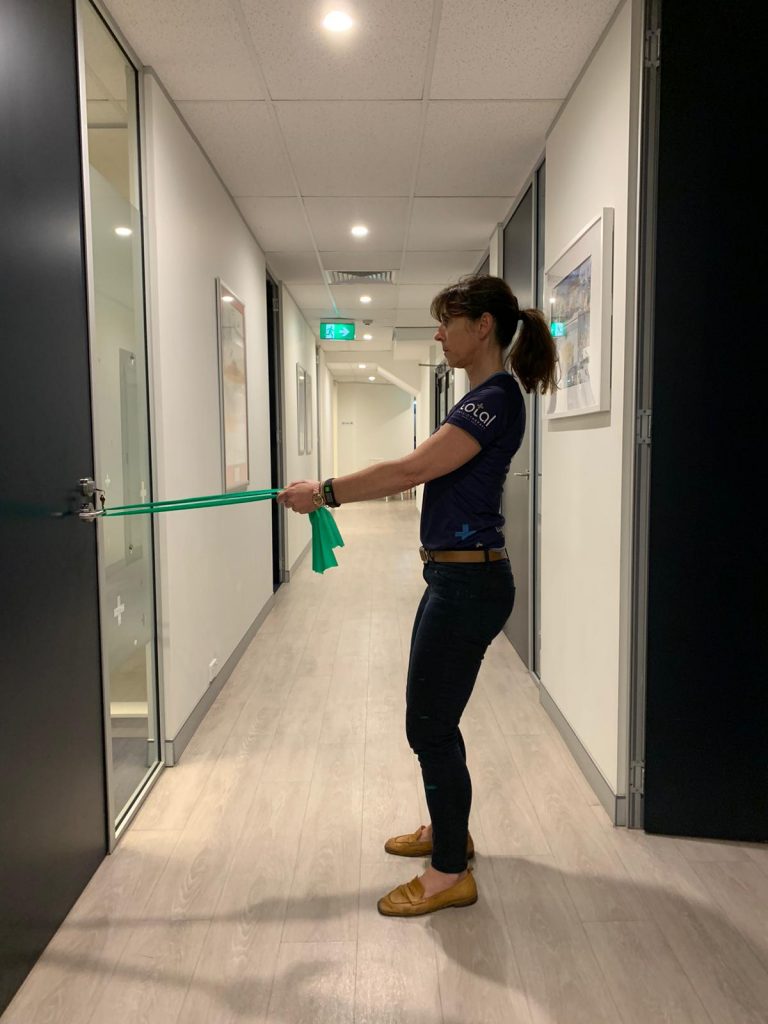
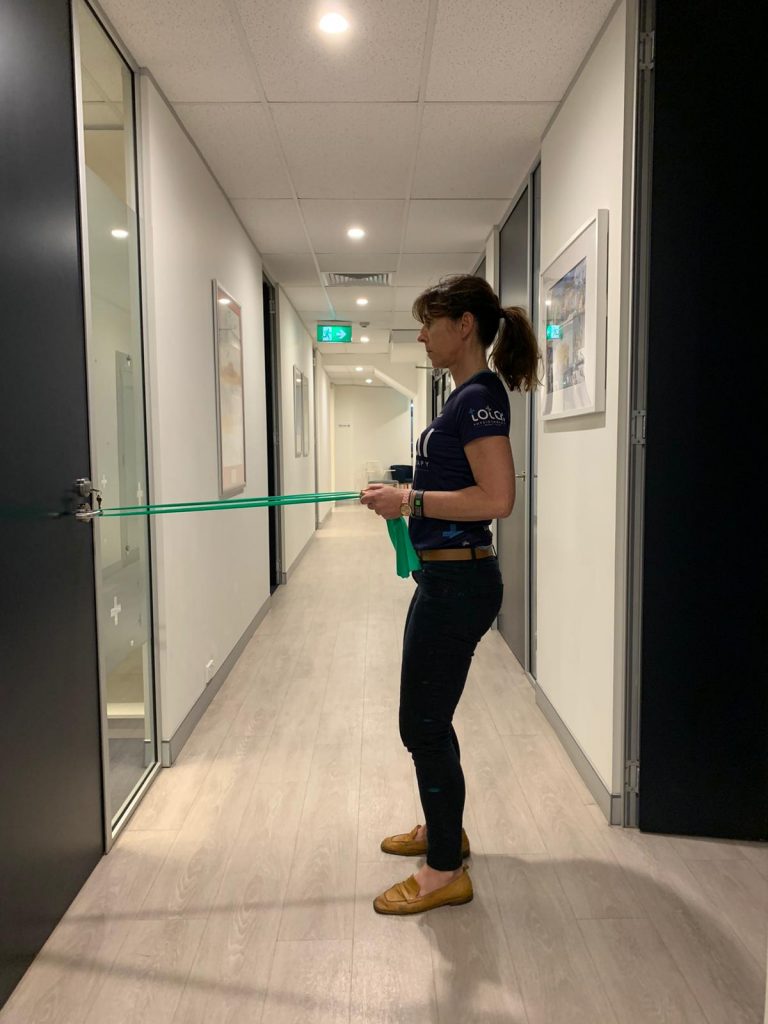
Upper Trap Stretch
Equipment required:
- NIL
Steps:
- Tip head to side and add gentle overpressure with opposite hand.
- You should feel a stretch through the muscles on the side of your neck down to your shoulder
- Hold each side for 30 seconds and do 2 sets on each side
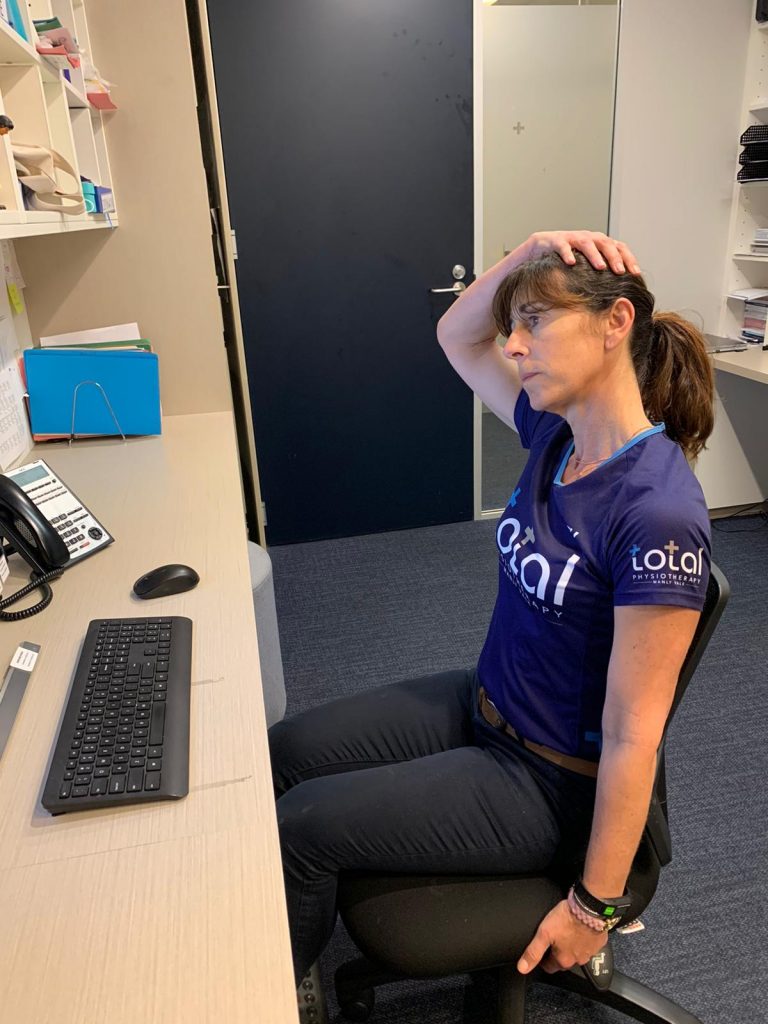
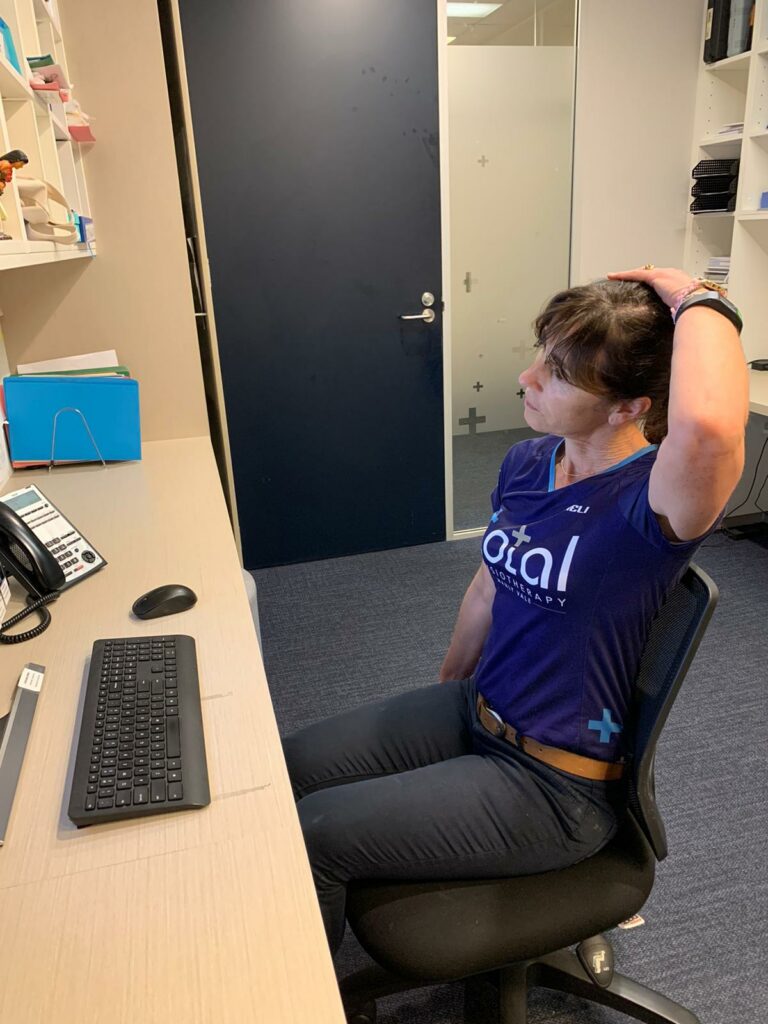
Sit to Stand
Equipment required:
- Chair + (Mini-band if you have one)
Steps:
- Sit upright in your chair with feet hip width apart and a mini band just above your knees – place your hands on either side of your pelvis
- Try to “draw in”/activate the muscles deep in your pelvis then slowly push through your heels and stand up.
- Squeeze through your bottom/glutes when you are up in full standing. Try to maintain 2 seconds to stand up and 2 seconds to sit down.
- Repeat 12 reps x 3 sets

CONTACT US
If you would like to book an ergonomic assessment or if you are experiencing back or neck pain due to your home office environment, please do not hesitate to call our team and we would be more then happy to assist you with any questions you may have.
Contact us today by phone on 02 9907 0321 or email us at: re*******@***********mv.com.


